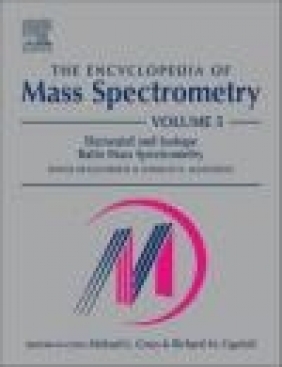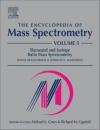Encyclopedia of Mass Spectrometry v 5
D Matthews
Encyclopedia of Mass Spectrometry v 5
D Matthews
- Producent: Elsevier
- Rok produkcji: 2004
- ISBN: 9780080438047
- Ilość stron: 1088
- Oprawa: Twarda
Niedostępna
Opis: Encyclopedia of Mass Spectrometry v 5 - D Matthews
This volume focuses on the plethora of mostly atomic ionization techniques that have been coupled to MS for elemental analysis, the measurement of isotope ratios, and even the determination of inorganic compounds and the precise measurement of isotope ratios of organic elements as small gas molecules by isotope ratio mass spectrometry (IRMS). This title includes chapter 1 that contains a description of inductively coupled plasma (ICP) MS, its requirements for sample preparation and introduction. The chapter also covers argon ICP, ion extraction, various mass analyzers, and the numerous application areas including environmental, geochemical, biomedical, nuclear, semiconductor, and speciation. Other atomic sources include the microwave plasma, which can be used as either an atomic ionization source or as a soft molecular ionization source, flames, spark sources, and glow discharges, including the types of mass spectrometers and separation approaches to which interfaces can be made. This title includes chapter 2 that discusses the application of electrospray ionization (EI) MS, also described in Volume 6, to inorganic analysis. Secondary ion and neutral MS (Chapter 3) can be used to determine trace elements in solids, particularly on their surface, with high spatial resolution. Atmospheric aerosols can also be studied using laser(s) for desorption and ionization of analytes in solids (Chapter 4). Thermal ionization MS, where sample atoms or molecules are ionized as they evaporate from the surface of a hot filament, is the focus of Chapter 5. Special applications are in Chapter 6, which covers accelerator MS, and Chapter 7, where large calutrons can be contrasted to the small analyzers that are taken aboard spacecraft, for example. It includes chapter 8 that focuses on IRMS for precise isotope ratio measurements. The highest level of precision can only be accomplished through use of a mass spectrometer specifically esigned for the purpose of making differential measurements. A key advance is direct conversion of organic compounds into small gas molecules for measurement, leading to important uses ranging from geology to biomedical sciences. It reviews the wide range of ionization and isotope methods used in inorganic mass spectrometry today. It features tutorials describing the key principles and instrumentation relevant to each method. It evaluates practical applications for the analysis of environmental, biological, biomedical, nutritional, geological, nuclear, microelectronic and extra-terrestrial materials. It includes more than 3400 references, 100 tables and 500 figures of which more than 200 are in color. "The Encyclopedia of Mass Spectrometry, Volume 5: Elemental and isotope ratio mass spectrometry covers the subject almost entirely and serves as a reference work with links to specialist literature if more details are required. Therefore, this book can be recommended to all beginners, students, and experts working in this broad field."--Analytical and Bioanalytical Chemistry
Szczegóły: Encyclopedia of Mass Spectrometry v 5 - D Matthews
Tytuł: Encyclopedia of Mass Spectrometry v 5
Autor: D Matthews
Producent: Elsevier
ISBN: 9780080438047
Rok produkcji: 2004
Ilość stron: 1088
Oprawa: Twarda


















